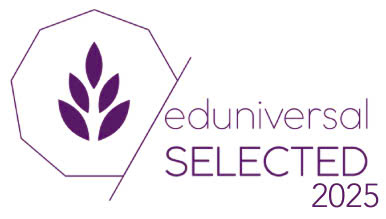- Eduniversal
-
-
Business Schools Ranking
-
Africa
- Algeria
- Angola
- Benin
- Cabo Verde
- Cameroon
- Congo
- Djibouti
- Egypt
- Eswatini
- Ethiopia
- Gabon
- Ghana
- Ivory Coast
- Kenya
- Lesotho
- Madagascar
- Malawi
- Mali
- Mauritania
- Mauritius
- Morocco
- Mozambique
- Namibia
- Nigeria
- RDC
- Rwanda
- Senegal
- Sierra Leone
- Somalia
- South Africa
- Sudan
- Tanzania
- Togo
- Tunisia
- Uganda
- Zambia
- Zimbabwe
- Central & Eastern Europe
- Central Asia
- Eurasia & Middle East
- Far East Asia
- Latin America
- North America
- Oceania
- Western Europe
-
Africa
- Schools of Excellence by field
- Awards
- News
- Contact
Summary:
This article explores the evolving role of business schools in Hawaii in 2025. It highlights key trends like digital transformation, sustainability, global integration, and corporate collaboration, while examining the challenges and opportunities ahead.
Understanding Hawaii’s Unique Economic and Educational Landscape
Business schools in Hawaii operate within a distinctive environment shaped by the state’s geographic location, cultural richness, and economic dependencies. As a Pacific hub, Hawaii’s economy thrives on tourism, hospitality, government services, and increasingly, tech and sustainability sectors.
With a GDP projected to reach $91.9 billion in 2025, business education is central to preparing students to succeed within this growing and multifaceted marketplace.
Institutions here blend core business fundamentals with regionally focused innovation, aligning academic offerings with Hawaii’s socio-economic context.
For global comparisons, see the top business schools in Australia or Hong Kong's leading programs.
Digital Transformation and AI Integration in Business Education
One of the most prominent developments in Hawaii’s business schools is the integration of digital technologies and artificial intelligence (AI) into education. In 2025, modular learning, digital certificates, and just-in-time training options enable greater flexibility and accessibility for students.
Institutions have evolved their curricula to align with industry demands, using advanced platforms and AI-driven tools to personalize learning and accelerate skill acquisition. This reflects similar trends in global education markets like those in South Korea.
Global Reach: Internationalization of Hawaii’s Business Education
Despite its geographic isolation, Hawaii holds strategic importance as a Pacific gateway, making internationalization a key priority.
Business schools in Hawaii are developing academic partnerships abroad and emphasizing cross-cultural business education to enhance global competencies among graduates.
Students are prepared for dynamic roles in both regional and international markets, positioning them competitively on the global stage. Schools in diverse regions like Albania are working toward similar goals in international collaboration and student mobility.
Sustainability and Environmental Stewardship as Core Specializations
In 2025, Hawaii’s natural environment and climate leadership are driving a pivotal focus on sustainability within business education.
Schools are integrating themes of climate action, ocean preservation, and corporate social responsibility into their courses, encouraging students to apply environmental intelligence to business practice.
Local research centers focused on green innovation and renewable energy are playing proactive roles in supporting these initiatives, much like sustainable academic efforts seen in countries like Finland.
Strengthening Corporate & Community Partnerships
Hawaii’s business schools are building robust bridges with private corporations, government institutions, and nonprofits to deliver applied research opportunities, hands-on internships, and entrepreneurial projects. This ecosystem fosters real-world learning and directly addresses local workforce shortages.
Through innovation hubs and corporate training centers, schools align education with evolving market skills needs, helping combat Hawaii’s pressing talent acquisition challenges. A similar focus on practical education can be found among Canadian business schools.
Meeting Modern Student Expectations and Career Needs
With increased demand for flexible, career-relevant learning, Hawaii’s institutions are transitioning beyond the traditional semester model.
Shorter, customized programs—including stackable credentials and remote options—allow students to upskill around their professional and personal lives.
This approach provides adaptable pathways to meet diverse career phases and goals, aligning with training methodologies seen across regions like Indonesia.
Facing the Challenges: Resources, Talent, and Adaptability
Despite the promising landscape, Hawaii’s business schools face several critical hurdles. Funding constraints tied to shifting financial models in higher education limit resources and expansion. Meanwhile, a limited local talent pool raises competition for both faculty and students in 2025.
Curricula must also continually evolve to keep pace with fast-changing business technologies, requiring constant investment in faculty development, infrastructure, and AI integration.
These challenges are not exclusive to Hawaii; similar concerns affect institutions like those in Mexico.
Embracing Opportunity: Innovation, Mission-Driven Learning, and Workforce Solutions
Despite these challenges, Hawaii’s business schools are uniquely positioned to lead transformative education in the Pacific. By investing in AI-enhanced learning, scalable education delivery, and sustainability-focused curriculum design, institutions can carve out an impactful academic presence worldwide.
Expanding apprenticeships, industry-aligned training, and mission-driven education will help boost graduate employability and long-term economic resilience.
This progressive vision mirrors innovation seen in emerging markets like Vietnam.
Business Schools Ranking in Hawaii (U.S.A)
|
4 Palmes of Excellence Top Business Schools with significant international influence |
Rank Position in
Palmes’ League |
Deans’ Recommendation
rate 2025 |
|---|---|---|
| 1 | 136 ‰ |
|
3 Palmes of Excellence Excellent Business Schools with reinforcing international influence |
Rank Position in
Palmes’ League |
Deans’ Recommendation
rate 2025 |
|---|---|---|
|
University of Hawaii at Hilo College of Business and Economics |
1 | 110 ‰ |
The Eduniversal Selected Schools list aims to highlight institutions by country are not yet eligible for a Palmes of Excellence League entry but are on a positive path toward achieving it.
The schools on the Eduniversal Selected list have been recognized by Eduniversal for their innovative projects, disruptive energy, and growing potential.
The schools on the Eduniversal Selected list have been recognized by Eduniversal for their innovative projects, disruptive energy, and growing potential.
College of Business- Hawaii Pacific University
College of Business, Computing and Government - Brigham Young University Hawaii
Major in Business Administration- University of Hawaii West Oahu
School of Business& Communication- Chaminade University of Honolulu
For a complete overview of master’s programs in Hawaii (U.S.A), visit our website.
You’ll find updated rankings, detailed program profiles, and exclusive advice to help you choose the right path for your career.
You’ll find updated rankings, detailed program profiles, and exclusive advice to help you choose the right path for your career.






